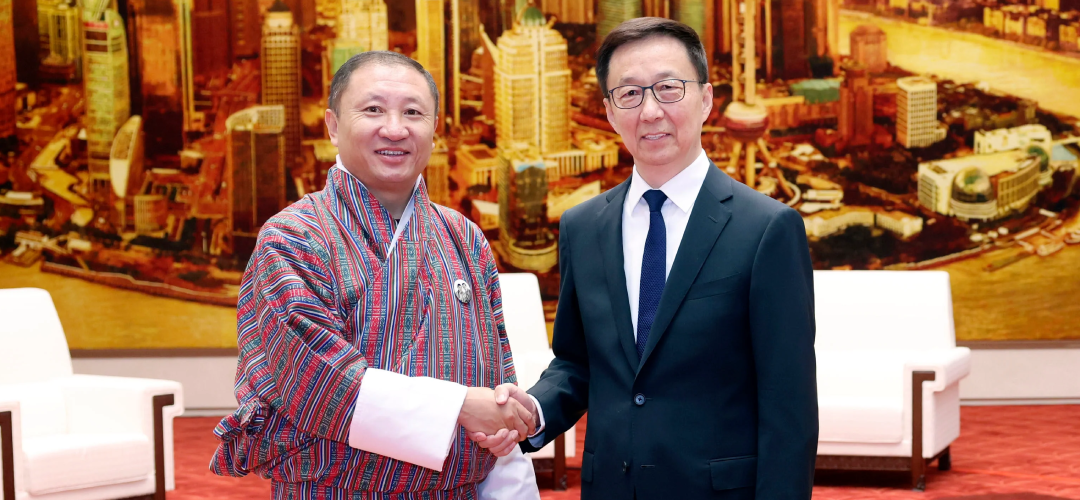Stirring Up a Hornets’ Nest
October 29, 2023 | Expert Insights

Bhutan and China seem to be moving closer to concluding their boundary negotiations. Bhutan's foreign minister, Dr. Tandi Dorji, visited Beijing, and the two nations set up a Joint Technical Team (JTT) for delimiting and demarcating the boundary in the 25th Round of Boundary Talks. In addition to accelerating long-running border negotiations, they also discussed establishing diplomatic ties; the two countries do not have formal diplomatic relations to date.
India is keeping a close watch on the progress of the Bhutan-China boundary settlement. India’s border security concerns are joined at the hips with those of Bhutan, notably in Doklam and the tri-junction between Bhutan, China, and India. With increasing pressure from China, it remains to be seen how Bhutan will navigate its way through the boundary settlement without undermining Indian security interests.
Background
China has settled boundaries with 12 out of 14 countries that it has boundary disputes with, with Bhutan and India being the only outliers. Bhutan-China border discussions have been going on for 37 years, but it is only recently that they gathered pace towards some conclusions. Border talks began in 1984, after which they signed the Guiding Principles on the Settlement of Boundary Issues in 1988. More recently, the two signed a memorandum of understanding on a Three-Step Roadmap to resolve border disputes in 2021.
Disputed areas are along Bhutan’s western border, including Doklam and areas near the Bhutan-China-India tri-junction, as well as to Bhutan’s north near Tibet – the Jakarlung and Pasamlung valleys. China recently also staked a claim on the Sakteng Wildlife Sanctuary in eastern Bhutan, opening a fresh can of worms.
The geopolitically sensitive Doklam plateau is located close to India’s narrow Siliguri Corridor – the “Chicken’s Neck” that connects the seven northeast states to the rest of India. It was the site of a 72-day standoff on Bhutanese soil in 2017 when Indian troops were sent into Bhutan to prevent Chinese army engineers from building a road that would push the tri-junction further south and even closer to the Corridor. Since then, Beijing has increased its presence on the strategically located plateau.
China has been building villages, roads, and other infrastructure projects in isolated areas of Bhutan’s mountainous regions as a part of its efforts to secure territorial claims. India is highly wary of China’s assertive activity in the Himalayas, given that the two have a longstanding dispute on the Himalayan frontier. A large-scale Chinese army invasion into Ladakh in 2020 resulted in a clash between soldiers.
Analysis
Even while it negotiates the boundary with Bhutan and urges it to establish diplomatic relations, China is building villages and outposts on disputed Bhutanese territory. These incursions, which have met little resistance, increase pressure on Bhutan to concede territories to China in the border resolution process. They also alter the status quo in these regions, gaining local advantages for China that affect India's geopolitical security.
China’s growing influence and military might add to the pressure on the small country to maintain friendly ties with its powerful neighbour. Along with discussing establishing diplomatic relations, Bhutan has also expressed support for President Xi Jinping’s new global initiatives: the Global Security Initiative (GSI), the Global Development Initiative (GDI), and the Global Cultural Initiative (GCI).
For China, building a presence in Doklam is not just about a geopolitical advantage over India but is also about gaining leverage over Bhutan. The sites of the built Chinese villages are held sacred in Tibetan Buddhist teachings as the birthplace of ancient cultural heroes with connections to the Bhutanese royal family. They are host to holy places and temples, according to an article by Chatham House (September 29, 2022). Intruding upon Bhutanese culture and historical and religious traditions is another way for China to strengthen its leverage.
India is particularly apprehensive that Bhutan could agree to an exchange of territories, ceding territory around Doklam to China in return for disputed territories in the north. Bhutan’s statement that there was no Chinese intrusion into its territory has added to India’s alarm that it could concede territory to China. This would have serious implications for India’s geopolitical security.
On the one hand, Bhutan's not acknowledging China's incursions could lead to further incursions on its territory. On the other hand, it has also been argued that this conciliatory, wait-and-see approach forms a part of the small state diplomacy through which Bhutan negotiates its peace.
However, given that India is a significant consideration for Bhutan in its foreign policy, it may consult India on a border settlement affecting India’s security interests. As per a 2012 understanding, the tri-junction boundary points between the three countries have to be determined by consulting with all three countries. Further, Bhutan and India signed a treaty in 1949 that made India's security concerns a consideration to be accounted for in Bhutan's foreign policy. However, a revised treaty in 2007 gave Thimphu more freedom in its foreign policy. The two nations continue to be allies, and India has been offering hundreds of millions of dollars worth of economic and military aid to Thimphu (BBC News - April 26, 2023).
Assessment
- China’s multiple incursions into Bhutanese territory could increase its leverage over its small neighbour. They also gain it strategic advantages over India, particularly because of the geopolitical sensitivity of the contested areas in the Himalayas.
- India must keep a watchful eye on the progress of the border negotiations and demarcation since it has implications for its national security, particularly the Doklam dispute and the Bhutan-India-China trijunction in which India is a stakeholder.
- Given that Bhutan has repeatedly downplayed border issues with China, it remains to be seen how it will navigate the boundary settlement without antagonising either of its large neighbours and how it will account for Indian security concerns. New Delhi would be watching the proceedings very closely and expecting Thimpu to keep in the loop throughout the entire course of negotiations.








Comments